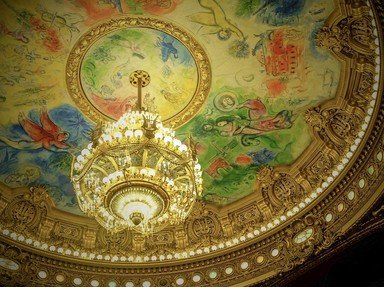Quiz Answer Key and Fun Facts
1. The lights go out, the conductor takes his place, and the gala starts with the first performance: a quiet, melancholy piece, dominated by a cello solo, which serves as an intermezzo in the opera it comes from, setting the scene for a sleepless king who stays up late, wondering whether his young wife ever loved him. The aria is "Ella giammai m'amň," and the composer, unsurprisingly, is from Italy. Who wrote the opera that contains this beautiful piece?
2. Our bass leaves the stage, accompanied by thundering applause, and a soprano takes his place. From Italy we cross the border into Austria, home to some of the most prolific composers in Western Europe, including Wolfgang Amadeus Mozart. Mainly known for light-hearted, traditional operas such as "The Marriage of Figaro" or the timeless "Magic Flute," Mozart also composed a more dramatic opera in 1781 which he himself considered his best. The opening recitative and aria of this opera, "Quando avran fine omai/Padre, germani, addio," is the next piece on our list. Sung by a Trojan princess held captive on the Island of Crete, which opera does this aria belong in?
3. From Austria, we cross yet another border to arrive in Bohemia, a region in the Czech Republic that used to be part of the Holy Roman Empire and, later, the Austrian Empire. This is where a composer comes from who is probably best known for his "New World" symphony. He has, however, also written an opera that contains the famous "Song of the Moon," a concert piece popular with soprano recitals to this day. And our soprano here does a marvelous job of it, too! What is the title of the opera where this aria originally belongs?
4. From Bohemia, we cross west into Germany, another country with a long and proud history of composers. The piece we hear the orchestra play next is somehow fitting with the nature-related theme of the previous aria. It is a short musical interlude (slightly extended for our concert purposes) found in one of the four operas that make up Richard Wagner's "The Ring of the Nibelung." Called "Waldweben" in German, it evokes the sound and life of the forest while the protagonist is resting under a tree. Which part of the Ring cycle contains this atmospheric piece?
5. From Germany, it is not too much of a leap to continue to France and visit the work of Georges Bizet, who wrote one of the most popular and most-performed operas in the world, "Carmen." However, when a tenor comes on stage and begins to sing, the aria we hear next, "Je crois entendre encore," is not from "Carmen" but from a lesser-known opera. It is a sweet and evocative tenor piece that follows a simple and beautiful melody. Which opera is it from?
6. Time for another musical interlude and another country: we're crossing the English Channel into England, where our next composer comes from. His opera about a distraught fisherman features the famous "Sea Interludes": musical intermezzos between acts that illustrate the weather and also signify the protagonist's mood and are often performed separately as an orchestral suite. Can you identify the opera and its composer from these clues?
7. From England, we hop over to Norway to listen to another famous piece of music. In fact, you prick up your ears in amazement as you realize that you heard this melody a thousand times before: in various movies, video games, and TV commercials. You know the composer is Edvard Grieg, and this piece for flute and oboe is known as "Morning Mood," but what is the orchestral work called where this piece comes from?
8. Our musical journey around the world is slowly drawing to a close. We leave Norway and travel east, to Russia, the country of a number of famous composers. A young soprano takes the stage. From what you can gather, she is singing an extensive aria while writing a letter to the man she admires and loves. Ah yes, this must be the "Letter Aria" from "Eugene Onegin," but who composed that opera?
9. Before we come full circle, our soprano on stage takes a deep breath and begins another aria that is wildly different from what we just heard. You realize that we touch upon the work of an American composer, and this coloratura aria is a popular concert piece, much better known than the operetta it comes from. You strain to understand and catch the phrase "Glitter and be gay, that's the price I pay, here I am in Paris, France..." Who composed this catchy tune?
10. For the grand finale of our gala, we come full circle and go back to Italy. Our soprano on stage is joined by a tenor. The ensuing duet is the infatuated declaration of love of two characters from a most beloved opera. Famous for its sweeping, enthusiastic tune and the tender closing phrase sung offstage, this piece called "O soave fanciulla" is the highlight and closing tune of our musical journey around the world. Which is the opera where Rodolfo and Mimí fall in love like this?
Source: Author
PearlQ19
This quiz was reviewed by FunTrivia editor
ertrum before going online.
Any errors found in FunTrivia content are routinely corrected through our feedback system.
